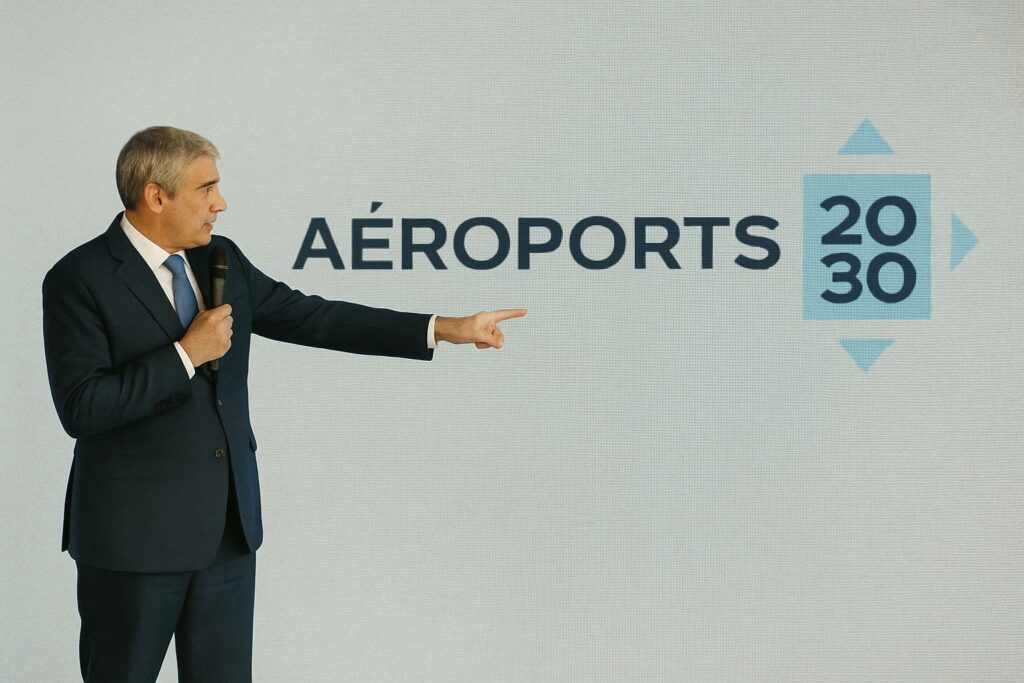Strategic realignment fortifies ONDA’s institutional architecture
The National Airports Office of Morocco (ONDA) has entered a decisive phase of administrative recalibration, announcing a two-tier reshuffle that places interim managers at the helm of the air-navigation and airport-operations divisions while an open recruitment process identifies permanent successors. Such sequencing, presented by Director General Habiba Laklalech as a “measured acceleration of governance reform” (ONDA press briefing, 4 May 2024), safeguards operational continuity in a network that served nearly 25 million passengers in 2023, up 13 percent on pre-pandemic levels according to the International Air Transport Association.
Rather than a mere personnel swap, the overhaul is designed to weave leadership renewal into the broader “Airports 2030” narrative: a US $4 billion investment programme targeting runway extensions, terminal upgrades and digital air-traffic-management tools. By allocating outgoing directors to project-development cells that report directly to the top office, ONDA retains institutional memory while freeing strategic positions for candidates versed in data-driven decision-making and integrated logistics.
Human capital emerges as the decisive transformation lever
Moroccan aviation executives have long argued that bricks and mortar alone cannot propel an airport system into global relevance. The new structure therefore elevates talent management to policy priority. Senior adviser Ahmed Benjelloun insists that “competitive advantage in the single-African-air-transport market will hinge on skill depth as much as on asphalt” (industry round-table, Casablanca, March 2024).
ONDA is accordingly expanding its collaboration with the École Nationale de l’Aviation Civile in Toulouse, while negotiating with the African Development Bank for a technical-assistance envelope dedicated to leadership coaching and cybersecurity certification. By making professional development an explicit key performance indicator, the agency hopes to institutionalise a learning culture that can outlive any individual director.
Commercial innovation meets the evolving passenger experience
The appointment of a new commercial-division head earlier this year signalled ONDA’s intention to shift revenue streams from aeronautical charges toward non-aeronautical segments—retail, gastronomy and real-estate concessions—mirroring trends observed in Istanbul and Doha. Consultants at AeroDynamic Advisory estimate that non-aero revenue already represents 42 percent of global airport turnover, a benchmark Moroccan managers are keen to match by 2027.
Casablanca Mohammed V International thus serves as a test bed for ‘terminal as lifestyle’ concepts that bundle coworking lounges with locally branded handicraft outlets. Preliminary surveys by Oxford Economics show a 9-percent increase in dwell-time spending among transit passengers on West-Africa–Europe corridors, suggesting that the strategy can subsidise infrastructure amortisation while enhancing customer loyalty.
Diplomatic leverage through enhanced regional connectivity
Beyond balance-sheet considerations, Rabat views airport modernisation as a vector of soft power in a continent where logistics corridors increasingly dictate political influence. The planned introduction of Performance-Based Navigation and a cross-border data-link with the Dakar Flight Information Region echoes the African Union’s Single African Air Transport Market agenda, elevating Morocco’s ability to mediate traffic flows between the Maghreb, Sahel and Atlantic basins.
In interviews, foreign diplomats stationed in Rabat describe a virtuous circle in which smoother point-to-point travel facilitates business forums, cultural exchanges and multilateral summits. One European envoy called the restructuring “a credible sign that Morocco is serious about becoming North Africa’s de facto intercontinental gateway”.
Outlook: balancing ambition with regulatory and fiscal resilience
While ONDA’s roadmap enjoys broad political backing, execution risks remain. The World Bank cautions that African infrastructure projects often encounter procurement delays averaging 18 months, while the International Civil Aviation Organization underscores the need for harmonised safety oversight as traffic recovers unevenly across regions. Analysts therefore welcome the decision to stagger projects in tranches aligned with cash-flow generation, a pragmatic hedge against macroeconomic volatility.
Even so, the symbolism of the current overhaul should not be underestimated. By embedding leadership renewal within a codified talent-management framework, ONDA signals that institutional agility—not bricks alone—will determine whether Morocco can translate air-traffic growth into sustainable, hub-driven prosperity. If the agency sustains momentum, the “Airports 2030” label may come to denote more than a date; it could stand as a model of adaptive governance in African aviation.

